2013 Toyota Prius Plug-In Tires & Services
Get Started
Complete Auto Care for Your 2013 Toyota Prius Plug-In
-
TIRES FOR YOUR 2013 Toyota Prius Plug-In View Tire Info GET TIRE PRICING
-
REPAIR FOR YOUR 2013 Toyota Prius Plug-In View Repair Info SCHEDULE REPAIR
-
MAINTENANCE FOR YOUR 2013 Toyota Prius Plug-In View Maintenance Info SCHEDULE MAINTENANCE
-
OFFERS FOR YOUR 2013 Toyota Prius Plug-In Limited Time Tire Offers VIEW ALL COUPONS
2013 Toyota Prius Plug-In Tires
Recommended Tires | Tire Information
2013 Toyota Prius Plug-In Tires Sizes, Speed Ratings, and Inflation
Not sure about your 2013 Toyota Prius Plug-In tire size? Use the following chart to find information on tire size, speed rating, and inflation.
| Trim Level | Speed Rating | Inflation in PSI F/R | Tire Size |
|---|---|---|---|
| 2013 Toyota Prius Plug-In Base | S | 35 PSI/33 PSI | P195/65R15 |
|
2013 Toyota Prius Plug-In Base Speed Rating: S Inflation F/R: 35 PSI/33 PSI |
* Note: these models have different tire sizes depending on vehicle options.
Recommended Tires for Your 2013 Toyota Prius Plug-In
What tires are best for a 2013 Toyota Prius Plug-In? Check out the following tire brands and types.
 Blizzak WS90
Blizzak WS90
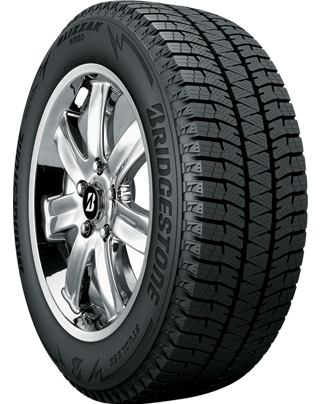
- No warranty
- Winter
- Winter
 Ecopia EP422 Plus
Ecopia EP422 Plus
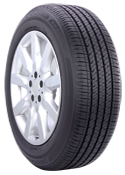
- Platinum Pact Limited Warranty
- All-Season
- Performance
 Turanza QUIETTRACK
Turanza QUIETTRACK
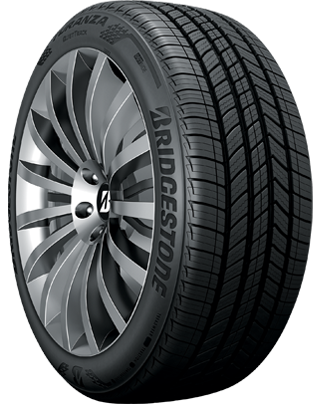
- No warranty
- All-Season
- Performance
 WEATHERPEAK
WEATHERPEAK
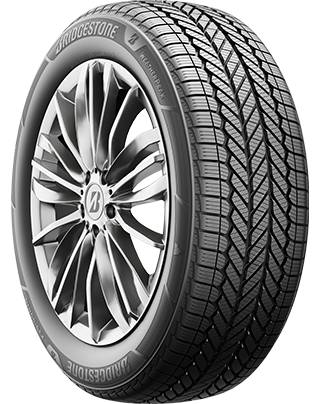
- Platinum Pact Limited Warranty
- All-Season
- Passenger Tires
 Affinity Touring S4 FF
Affinity Touring S4 FF
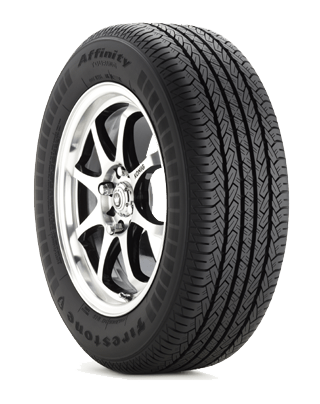
- Gold Pledge Limited Warranty
- All-Season
- Passenger Tires
 ALL SEASON
ALL SEASON
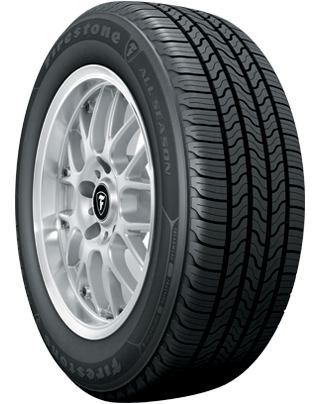
- No warranty
- All-Season
- Passenger Tires
 FT140
FT140
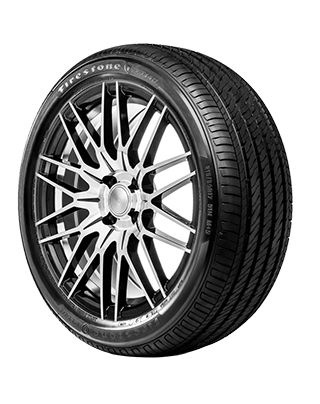
- No warranty
- All-Season
- Passenger Tires
 WEATHERGRIP
WEATHERGRIP
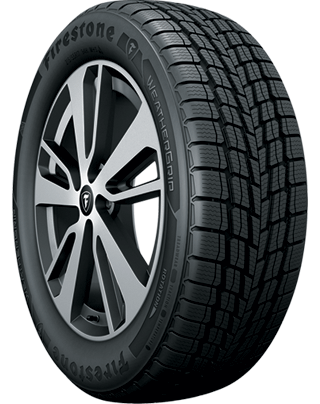
- No warranty
- All-Season
- Passenger Tires
 Winterforce 2
Winterforce 2
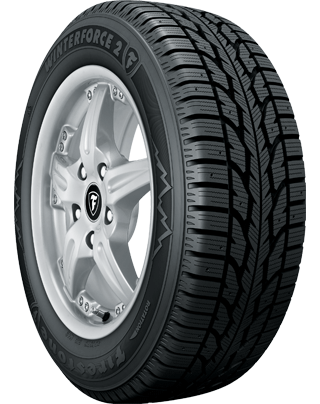
- No warranty
- Winter
- Winter
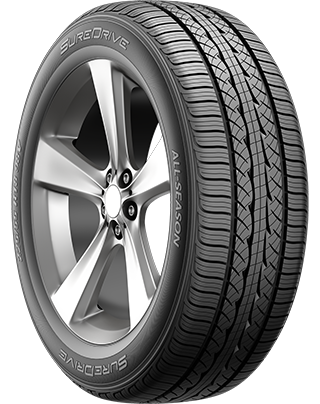
- No warranty
- All-Season
- Passenger Tires
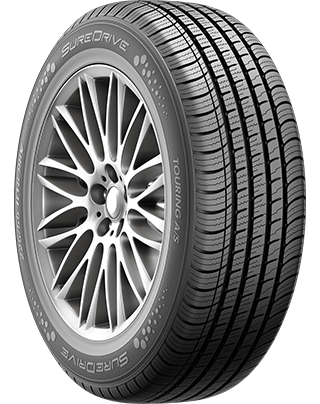
- No warranty
- All-Season
- Passenger Tires
 Extensa A/S II
Extensa A/S II
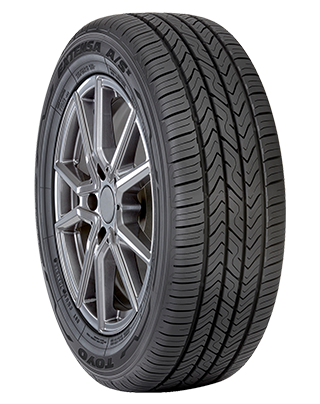
- No warranty
- All-Season
- Passenger Tires
2013 Toyota Prius Plug-In Tire Information
Apart from finding the right tire size, you also want to consider a handful of other factors when buying new Toyota Prius Plug-In tires like how and where you drive, and how much you want to spend. When evaluating your driving conditions, think about where you live (countryside vs. city vs. mountains) and the kind of unexpected weather you're likely to experience. Drivers in states that fully experience all four seasons often buy two sets of tires: one set for winter, one set for summer. Other drivers prefer the convenience of all-season tires. They make one trip to the tire shop and they're pretty much ready for rain, light snow, or sun!
Driving style is next on the list to think about when buying tires. If you're an avid off-roader who yearns to pioneer new paths, you have very different tire needs than a highway commuter who doesn't hit the hills very often. Visit your local Firestone Complete Auto Care for help selecting the tire that's right for you, or get started by browsing tires that fit your Toyota Prius Plug-In.
2013 Toyota Prius Plug-In Tire Installation & Rotation
Firestone Complete Auto Care installs more tires on more cars than most other companies. We're your tire shop and a complete service center for tire installation, maintenance, repair, rotation, and alignment! We make it easy to buy new 2013 Toyota Prius Plug-In tires online and book an installation appointment at the same time.
Questions About 2013 Toyota Prius Plug-In Tires
-
Why check Toyota tire inflation? A small decrease in tire pressure can have a big impact on your driving. Maintaining proper tire pressure can help improve braking time, increase fuel economy, and boost tire lifespan.
-
Why are there numbers on the side of my Toyota Prius Plug-In tires? Your tire sidewall numbers tell you the recommended load carrying capacity, speed rating, treadwear, traction, and tire size. Talk to a tire technician to learn how to read Toyota tire numbers.
-
Is there an easy way to check Toyota tire tread depth? Stay on top of your tire tread depth to help avoid a dangerous drive. You can check tread depth with a penny. Hold the penny so that Abraham Lincoln is facing you, then place your penny into a tread groove upside down. If you can see the top of Abe’s head, your tread is shallow and it might be time for new Toyota Prius Plug-In tires. Grab a penny. Hold the so that Abe Lincon's head is facing you and his hair is pointing toward the ground. Then, place the penny into a tread groove. If you can see the top of Abe’s head, your tread is shallow and it might be time for new Toyota Prius Plug-In tires.
Types of 2013 Toyota Prius Plug-In Repairs
When to repair, when to replace? Click on a repair below to learn more about Toyota Prius Plug-In repairs at Firestone Complete Auto Care.
Get Repairs for Your 2013 Toyota Prius Plug-In
No driver looks forward to car repairs. But at Firestone Complete Auto Care, we strive to give you the excellent repair experience you deserve. When it’s time for 2013 Toyota Prius Plug-In repair services, head to your nearest Firestone location and rest easy knowing that your Prius Plug-In is in capable hands. Before we begin any repair work, we’ll diagnose any issues and answer your questions about potential repair options. We’ll never recommend a repair we don’t think is necessary for your safety or the performance of your Toyota.
How Much Does Toyota Prius Plug-In Repair Cost?
The cost to repair your 2013 Toyota Prius Plug-In depends on the type of repair, the cost of any replacement parts, the amount of labor necessary to get the job done, and where you live. But no matter your location, you may be able to save money with one of our many auto repair coupons or offers.
A few different aspects can influence repair costs for your 2013 Toyota Prius Plug-In, like
2013 Toyota Prius Plug-In Auto Repair Q&A
-
Can scheduled maintenance help me avoid repairs? The cheapest 2013 Toyota Prius Plug-In repair is the one that isn’t necessary in the first place! Staying up-to-date with your car’s scheduled maintenance services is a great way to keep future repair costs low.
-
What does it mean to be 'in tune' with your car? No, we’re not talking about finding the best jams on the radio! You know your car best, and you’re the first person who will notice if something doesn’t feel right (like new smells, sights, or sounds coming from your car). If you sense that something is 'off,' stop in for a Courtesy Check to have these symptoms checked out ASAP. Early action could help you prevent Toyota Prius Plug-In repairs.
-
Are the repairs you recommend for my Toyota actually needed? We won’t recommend a service or repair for your 2013 Toyota Prius Plug-In unless we think it’s necessary to keep you safe. Want to know more about a specific recommended repair? Ask! We’re here to help.
Get Your 2013 Toyota Prius Plug-In Brakes Fixed
Your Toyota Prius Plug-In may be powered by a strong engine. But if you can't stop it, then it's scrap metal. Don't wait if you're experiencing brake squeaks or a loss of braking power. Safe driving and responsive brakes go hand in hand. Plus, waiting can lead to more expensive parts wearing out and requiring replacement. Get your 2013 Toyota Prius Plug-In brakes fixed at Firestone Complete Auto Care. We offer a variety of brake services like brake pad/shoe removal and replacement, rotor/drum resurfacing, brake fluid exchange, and brake caliper and wheel cylinder installation.
Toyota Prius Plug-In Brakes Frequently Asked Questions
-
What can cause my Prius Plug-In to shake when I apply the brakes? If your Prius Plug-In shakes when you brake, you could be dealing with warped rotors, faulty brake calipers, worn brake pads or rotors, or loose or worn suspension parts. Schedule a free brake inspection at Firestone Complete Auto Care for help diagnosing your brake issue.
-
How often do I need to replace my Prius Plug-In brake pads? Brake pads generally last between 30,000 and 40,000 miles. Your driving can affect how long your Prius Plug-In brake pads last, though. For example, mainly driving on highways and gradually braking can help increase the lifespan of your brake pads, and carrying hefty loads or riding your brakes can shorten it.
-
Does brake fluid leak when the car is off? Your Prius Plug-In has a closed hydraulic brake system, meaning you should not have a brake fluid leak under normal conditions. However, parts of your brake system can wear out over time or become damaged, which can lead to a brake fluid leak.
2013 Toyota Prius Plug-In Drivetrain Repairs
Drivetrains for front, rear, and all-wheel-drive and 4WD vehicles are not all the same. You don't want to go to any random shop for drivetrain repair. You want to come see the technicians at Firestone Complete Auto Care. We can take care of most 2013 Toyota Prius Plug-In drivetrain components Your Prius Plug-In might need driveshaft repair if you notice clunks when shifting, vibration as your vehicle accelerates, resistance when turning, or heavy vibrations in your floorboards.
2013 Toyota Prius Plug-In Drivetrain Questions
-
How do I know if my Toyota drivetrain is damaged? Your Toyota Prius Plug-In drivetrain might be damaged if you notice strange noises from the rear of your vehicle, see fluid leaking, or have issues turning.
-
Why is my Prius Plug-In malfunction indicator light (MIL) on? Engine problems, transmission problems, faulty sensors, electrical issues, misfire issues, and connector problems could all cause your Prius Plug-In’s malfunction warning light, or better known as the check engine light, to illuminate.
-
Is a drivetrain malfunction in my Prius Plug-In serious? A drivetrain malfunction in your Prius Plug-In should never be taken lightly. Driving with a malfunctioning drivetrain can put you in danger and lead to further vehicle damage, so it's essential to have a qualified mechanic assess and repair the problem as soon as possible.
2013 Toyota Prius Plug-In Wheel Alignment
Alignment services involve precise adjustments to your Toyota Prius Plug-In’s suspension system, which serves to attach your wheels to your vehicle. In an alignment service, the individual angles of your tires are adjusted so that they come into contact with the road in just the right way — the way Toyota intended them to. Before we adjust the alignment of your 2013 Toyota Prius Plug-In, we’ll start by checking the current alignment angles. If needed, we'll adjust your wheel alignment angles to match Toyota recommendations.
Questions About Toyota Prius Plug-In Alignment
-
What can knock my Toyota Prius Plug-In out of alignment? Potholes and uneven roads can knock your car out of alignment, so stay aware of the road ahead and adjust your speed (or avoid these obstacles whenever it’s safely possible).
-
How often should you get a wheel alignment for your Prius Plug-In? It’s usually suggested you check your alignment about every 6,000 miles or 6 months (whichever occurs first). Still, you should reference your Prius Plug-In owner’s manual for Toyota's recommended interval.
-
Do you need to get your Prius Plug-In wheels aligned? It’s likely not a requirement to get an alignment when you install new tires on your Prius Plug-In, but it's a smart idea to do so anyway. An alignment can help ensure even tire wear, smooth handling, and better fuel efficiency.
2013 Toyota Prius Plug-In Engine Repair
If your 2013 Prius Plug-In engine needs repairs, our expert techs will let you know what needs to be done and why before they get started. We never do any work without your sign-off. If a service can wait, we’ll make sure you know. But if immediate repairs are necessary for your safety, we’ll make sure that's clear, too. We seek to give you all the info you need to make a smart decision about our services. Turn to Firestone Complete Auto Care for your 2013 Prius Plug-In engine repairs and you can feel good knowing that we only use Toyota-compliant replacement parts such as the cambelt, motor oil seal, fuses, or another part.
Questions About 2013 Toyota Prius Plug-In Engines
-
Why does the check engine light in my Prius Plug-In turn on when I start my car? Generally, your check engine light turning on upon ignition is not a bad thing. It’s just your Prius Plug-In firing up its circuits. The light should turn off in a bit, but come see us if it doesn't.
-
Why does my Toyota engine sound different? Strange engine sounds can be a sign something’s off in your Toyota Prius Plug-In. Knocking or tapping could be a symptom of low oil. A high-pitched whistle could signal an intake leak or misaligned belt. Squealing can be traced back to a loose fan belt, and grinding might be a sign of brake problems rather than engine issues.
-
What could damage a Toyota engine? Some driving habits are not so great for your engine. These include driving on a near-empty gas tank, flooring the gas pedal while the car is in Park, or accelerating too quickly, too soon. Protect your engine’s performance and efficiency by distancing yourself from these habits.
2013 Toyota Prius Plug-In Tire Repair
If the road has been rough on your 2013 Toyota Prius Plug-In tires, Firestone Complete Auto Care can help. There’s a chance your tire could be plugged and patched (rather than replaced). Our technicians can inspect your tire and let you know if it is safe to repair. We’ll begin by taking a look at where the damage is, the type and extent of the tire damage, and how all of your tires are wearing.
If your 2013 Toyota Prius Plug-In tire puncture can be repaired, we'll follow three basic steps to repair it: (1) Take the tire off the wheel for easy inspection, (2) fill in the area that’s been punctured to prevent damage from moisture, and (3) secure and seal the inner tire liner to ensure the tire is airtight.
Frequently Asked Toyota Prius Plug-In Tire Repair Questions
-
How soon should I have my flat tire repaired? Driving on a flat tire is not a good idea. Your Prius Plug-In engine will keep running with a flat tire, but you could damage your wheel by continuing to drive on a flat.
-
Can I use an emergency/temporary sealant to fix my Toyota's flat tire? Temporary sealants will solve your problem… for a little bit. If you’ve seen temporary or emergency tire sealant before (it usually comes in a can), it can be tempting to turn to this as a solution for your flat tire. Keep in mind that these fixes could buy you some time to get to Firestone Complete Auto Care for a proper repair, but they could also cause some harm in the process (for example, damage to your TPMS). Plus, using a product like this could void your tire warranty.
-
What is causing the tires on my Prius Plug-In to keep losing air? If your Prius Plug-In tires are always losing air, you may have a puncture, damaged wheel, or leaking valve stem.
Maintenance for Your 2013 Toyota Prius Plug-In
You want your Toyota Prius Plug-In to last as long as possible. If you put in the effort to keep up with proper maintenance, you could hit 200,000 miles (or beyond!) in your Prius Plug-In.
2013 Toyota Prius Plug-In Maintenance Schedule
What is the manufacturer recommended maintenance schedule for a 2013 Toyota Prius Plug-In? Find maintenance info for your vehicle.
About 2013 Toyota Prius Plug-In Scheduled Maintenance
Instead of waiting for an issue to arise with your Prius Plug-In, you can stay ahead of problems before they even begin. It’s as easy as following the recommended maintenance schedule that’s been written specifically for your 2013 Toyota Prius Plug-In! The recommended maintenance schedule is put together by Toyota, your vehicle manufacturer. Scheduled maintenance services can vary depending on driving conditions, climate, and other factors; however, recommended maintenance usually includes services like oil changes, tire rotations, brake pad replacement, filter changes, and fluid checks and exchanges. Scheduling routine service appointments is one of the best ways to help extend your Prius Plug-In's life, increase your vehicle safety, and help you avoid expensive repairs caused by 2013 Toyota Prius Plug-In problems later.
Essential Maintenance to Keep Your 2013 Toyota Prius Plug-In Running Newer, Longer
Bring your 2013 Toyota Prius Plug-In to Firestone Complete Auto Care for factory-recommended maintenance services and our technicians will jump right in with a Courtesy Check. This Courtesy Check can establish a baseline of what may need to be addressed during your service appointment. During a Courtesy Check, we’ll always check your battery, then we’ll move on to inspect your Prius Plug-In’s head and tail lights, tires, fluid levels, alignment, and windshield wipers.
Firestone Complete Auto Care is your spot for 2013 Toyota Prius Plug-In maintenance. So visit us regularly, or visit us urgently. Many locations are open on weekends and in the evening.
Questions About 2013 Toyota Prius Plug-In Maintenance
-
What do I do if I hit a pothole in my Toyota Prius Plug-In? Watch out for pothole damage. If your 2013 Prius Plug-In is pulling to one side or the other, your tires or suspension system could be calling out for help.
-
When should I switch my Toyota Prius Plug-In to high mileage oil? Do you have more than 75,000 miles on your Toyota Prius Plug-In? If so, request to switch to high mileage oil at your next oil change. This type of oil is specially formulated to keep aging engine parts in the best possible condition.
-
Can Toyota dashboard warning lights wait? It's better to get them addressed as soon as possible. An illuminated dashboard light means something in your vehicle isn't functioning like it should. Letting problems linger can mean bad news for your Toyota Prius Plug-In, so be sure to take your car in for service as soon as you notice an illuminated dashboard light.
2013 Toyota Prius Plug-In Battery Replacement & Size
Not sure what battery to get for your Toyota Prius Plug-In?
| Battery | Engine | Warranty | Cold Cranking Amps | |
|---|---|---|---|---|
| L4/1.8L | Replacement months | Performance months |
Car Batteries for 2013 Toyota Prius Plug-In
Generally, car batteries last from three to five years. Don’t get stranded by your Prius Plug-In’s car battery. Replace it regularly instead! Pay attention to clues that your battery is on its way out. A slow engine crank, an illuminated check engine light or battery signal, bloated battery case, corroded battery terminals, and subpar electrical performance can all signal that your battery needs attention.
You can also get a Free Battery Test at your local Firestone Complete Auto Care. Stop by for a free battery test and, if needed, get your Toyota Prius Plug-In a replacement battery. Car batteries are one of our many specialties! Our technicians are familiar with Toyota-specific recommendations for Prius Plug-In car batteries’ reserve capacities and cold cranking amps. Get help identifying the type and size of battery that matches your vehicle, and schedule a fast car battery replacement at your earliest convenience.
Top Toyota Prius Plug-InCar Battery Questions
-
Why doesn’t my Toyota Prius Plug-In battery stay charged? A battery is in its final hour when it will no longer hold a charge. The battery may be too old. Or, you may have been leaving your car doors ajar and the cabin light at night. Stop by for a complimentary battery check at your favorite Firestone Complete Auto Care and get a handle on your car battery’s health.
-
How long can I expect my car battery to last? The typical 12-volt car battery may last three to five years, depending on the type of battery, the driving conditions, and how well the battery is maintained.
-
Why is there white, flaky stuff around my Prius Plug-In’s battery post? The white, flaky stuff that can build up around your Prius Plug-In’s battery terminals is known as corrosion. Acid leaking from your vehicle’s battery post can have a chemical reaction with the air, leading to an accumulation of the white, powdery substance over time. Corrosion can affect the flow of electricity between your battery and the electrical system in your Prius Plug-In, possibly causing issues with electrical performance and starting. If left unaddressed for long enough, it may even cause your battery to prematurely fail.
Oil Changes for 2013 Toyota Prius Plug-In
Your 2013 Prius Plug-In’s oil should be changed according to Toyota’s recommended oil change intervals. Your Prius Plug-In may need an oil change right away if your check engine/oil change light is on, you hear knocking sounds coming from the engine, smell oil inside the car, or notice an unusual amount of exhaust. You may also need an oil change more frequently than Toyota recommends if you haul heavy loads, drive in dusty areas, enjoy off-roading, or drive at low speeds for long distances.
Your local Firestone Complete Auto Care has the right 2013 Toyota Prius Plug-In motor oil: either synthetic or conventional. Talk with a teammate and consult your owner's manual before picking a motor oil. At Firestone Complete Auto Care, you can choose from the following oils: Quaker State® Advanced Durability™ conventional oil, Pennzoil® High Mileage Vehicle® motor oil, Pennzoil Platinum® Full Synthetic motor oil with PurePlus™ Technology, and Shell Rotella® heavy-duty engine oil. During an oil change, one of our techs will change your Prius Plug-In’s oil, replace and recycle your used oil and oil filter, inspect all of your other filters, top-off important fluids, and perform a free inspection on the rest of your vehicle. Make an appointment for an oil change service today and let the oil experts take care of your Prius Plug-In's engine.
2013 Toyota Prius Plug-In Oil Change Q&A
-
Why is my Toyota Prius Plug-In oil light illuminated? The oil change light in your Toyota Prius Plug-In could be triggered by an overdue oil change. However, if the oil pressure light is on, you may be dealing with low engine oil, a failing oil pump, a clogged oil filter, or a malfunctioning oil pressure sensor.
-
Can I change my Toyota Prius Plug-In oil at home? Changing your own oil isn't as convenient as you might think. It requires special tools and old oil must be disposed of properly. Having your oil professionally changed reduces the chances of something going wrong with the oil change, but also with your vehicle down the road.
-
Why is my Toyota Prius Plug-In exhaust smoke grayish or blue? You could have an oil leak and have a case of burning oil. Looks like it’s time for a professional to take a look. The leak could be the result of worn valve seals, fried piston rings, or old cylinder walls.
2013 Toyota Prius Plug-In Engine Tune-Ups & Maintenance
Periodic tune-ups can bring more power back to your Prius Plug-In’s engine. Your local Firestone Complete Auto Care offers a range of engine tune-up services for your 2013 Toyota Prius Plug-In. The standard Firestone Tune-Up is one service option. The standard Firestone Tune-Up includes new spark plugs (and installation!), a thorough inspection of engine components, and a lifetime parts warranty*. A second service option replaces the air and fuel filter in your Prius Plug-In. Our third service is a thorough cleaning of the fuel system. During this type of tune-up, we use a three-step process to get rid of harmful varnish, dirt, and carbon deposit buildup in your Prius Plug-In’s fuel injectors, throttle body, and throttle plate. This goes a long way in boosting your fuel system’s overall performance. Keep in mind that your Prius Plug-In's mileage and maintenance history can uniquely impact its tune-up needs. Talk to a technician about your driving style, mileage, and service history to learn more about your vehicle's specific needs.
*Talk to a Firestone Complete Auto Care teammate for full terms and conditions on warranties.
2013 Toyota Prius Plug-In Engine Tune-Up Q&A
-
Will it hurt my Toyota Prius Plug-In to drive with old spark plugs? Replace spark plugs on time or about every 30,000 miles or so. Without the spark of electricity created by spark plugs, your engine doesn’t have the combustion it needs to start — which could leave you stranded on the road. Always replace your spark plugs on time based on Toyota’s recommendations.
-
What do I do if I see a pool of liquid under my Toyota Prius Plug-In? Puddles could indicate that your vehicle is leaking coolant, oil, or brake fluid. Ignoring these leaks can lead to permanent engine damage, so address these symptoms ASAP with a tune-up service.
-
How often should I clean my Toyota Prius Plug-In fuel injectors? The frequency at which car fuel injectors should be cleaned can vary depending on several factors, including the type of fuel used and the driving conditions. Some manufacturers generally recommend a fuel system cleaning as part of your general car maintenance, or as needed based on symptoms of poor fuel system performance.
2013 Prius Plug-In Toyota Steering & Suspension Services
When you first drove your 2013 Toyota Prius Plug-In, you and your passengers probably enjoyed a ride that was smooth and balanced. Lately, though, your ride’s been feeling a little bumpy. Maybe your Prius Plug-In bounces, pulls to one side, or makes noise whenever you turn or drive over a speed bump. The first sign of trouble is the best time to bring your 2013 Toyota Prius Plug-In in for steering and suspension services. We’ll get to the source of your car problems and, if steering and suspension service is needed, we’ll explain what your car needs and how much it’ll cost to get it done. We won't begin any work without your permission.
2013 Prius Plug-In Steering & Suspension Q&A
-
What can cause my Toyota Prius Plug-In to have a bouncy ride? Damaged struts or shocks can't dampen road bumps properly, causing your vehicle to feel like a trampoline after each dip or bump.
-
Why does my Prius Plug-In's nose dive down when I hit the brakes? As you brake, the forward momentum of your Prius Plug-In combined with its weight sends a ton of force to its front end. A damaged or worn suspension system can cause the front end to compress and dip even further.
-
Does treadwear and tire pressure impact my Prius Plug-In's steering and suspension? Maintaining your tires can help reduce strain on the suspension, nd also let you know when it's time to replace your tires. A faltering steering and suspension system could lead to uneven tire wear.
2013 Toyota Prius Plug-In A/C Service Near You
Technicians at Firestone Complete Auto Care are ready to help you address your 2013 Toyota Prius Plug-In A/C problems. In this A/C performance inspection, we’ll check out the current condition of your 2013 Toyota Prius Plug-In A/C system to determine whether repair work is needed. We’ll test overall system performance, check for any leaks, and measure the system pressure.
While your 2013 Toyota Prius Plug-In’s air conditioner is being serviced, we’ll also do an A/C evacuation and recharge. To do this, one of our technicians will remove the refrigerant in your A/C system (if there is even any left to remove). Next, they will evacuate the system according to Toyota's recommendations. Finally, we’ll recharge the A/C system with new refrigerant.
Frequently Asked Questions for 2013 Toyota Prius Plug-In A/C Systems
-
What’s making my Prius Plug-In A/C put out warm air? Maybe your A/C starts cool but then gets warm. Or maybe it never gets cold in the first place. Either way, your A/C troubles could be traced back to a clogged expansion valve, faulty compressor clutch, blown fuse, or leak.
-
How does my A/C system get a leak? Over the years, the rubber seals and gaskets in your Prius Plug-In’s A/C system naturally degrade. Moisture can get into the system and cause a malfunction, or parts can simply wear out so that your system no longer seals properly.
-
Why won’t my Prius Plug-In’s A/C cool the vehicle when the car is stopped? There could be issues with one or more components in the air conditioning or electrical system. Your Prius Plug-In may have a faulty cooling fan or low refrigerant.
2013 Toyota Prius Plug-In Transmission Service
Your transmission carries power from the engine to the wheels so that you can drive at the speed you desire. Because of the transmission’s responsibility to translate the right dose of power into the right amount of speed, a small transmission issue can put a big dent in your Prius Plug-In’s performance. 2013 Toyota Prius Plug-In transmission problems can show up as shifting delays, grinding when accelerating, the car shaking on the road, or a burning smell or whistling sounds coming from under the hood. If you don’t pay attention to Toyota Prius Plug-In transmission trouble you might notice your fuel economy decrease or find that you can't drive your Prius Plug-In at all. Our expert techs are familiar with 2013 Prius Plug-In services and perform them according to Toyota-recommended specifications. If you think there’s something wrong with your Prius Plug-In’s transmission, schedule an appointment at your local Firestone Complete Auto Care to help diagnose, treat, and prevent major transmission issues.
Questions About 2013 Toyota Prius Plug-In’s Transmission
-
How often does my Prius Plug-In transmission fluid need to be checked? Maintaining your Toyota Prius Plug-In transmission fluid is one of the best ways to maintain your transmission's health. A general rule of thumb is to have your transmission fluid checked and changed about every 30,000 to 60,000 miles, but that timeline can change if you're hard on your Toyota. Leaks or low transmission fluid are easy to spot and affordable to repair.
-
Can transmission fluid leak from my Toyota Prius Plug-In? Yes. Toyota Prius Plug-In transmission fluid can leak over time and potentially cause transmission issues. Worn or damaged seals, a loose or damaged transmission pan, a cracked transmission housing, faulty transmission cooler lines, or an overfilled transmission could cause transmission fluid leaks.
-
Should I avoid driving my Toyota Prius Plug-In if there is a transmission fluid leak? You should avoid driving with a transmission fluid leak. Your transmission system relies on transmission fluid to operate properly, and a leak may decrease performance, cause your Prius Plug-In to overheat, or even lead to transmission failure.
2013 Toyota Prius Plug-In Inspections
Every service performed at Firestone Complete Auto Care includes a multi-point Courtesy Check. The technician will begin by testing your Toyota Prius Plug-In's battery to see how much charge it has left – and determine if it may fail in the near future. After we’ve inspected your Toyota Prius Plug-In’s battery, we’ll visually inspect your lights, windshield wipers, filters, hoses, alignment, tires, fluid levels, and belts.
While every visit to your local Firestone Complete Auto Care includes a Courtesy Check, you can also request a Complete Vehicle Inspection for your 2013 Toyota Prius Plug-In if you suspect there may be a bigger problem. During a Complete Vehicle Inspection, we’ll visually check everything that’s on the list for a Courtesy Check. Additionally, we’ll perform a thorough manual inspection of your steering and suspension system, brakes, and exhaust components. With this inspection, we want to help you stay on top of any issues that may wreak havoc on your 2013 Toyota Prius Plug-In if left unaddressed.
In some cities or states, you may be able to complete your vehicle’s safety tests or state inspection at your nearest Firestone Complete Auto Care. Specific requirements for these types of inspections vary by state.
Common 2013 Toyota Prius Plug-In Vehicle Inspection Questions
-
How do I know if my Toyota Prius Plug-In needs a check-up? It needs a check-up if something feels 'off' to you, the driver. Your Toyota Prius Plug-In could benefit from a Courtesy Check if it has any illuminated dashboard lights, you hear weird noises coming from any part, the engine doesn't start sometimes, or your vehicle pulls to one side.
-
Can you fix my 2013 Toyota Prius Plug-In so it will pass a state inspection test? Did your vehicle fail a recent state inspection test? We can help. Come in for a checkup and we’ll diagnose the issue.
-
When is the best time to get a complete vehicle inspection for my Toyota Prius Plug-In? It’s generally a good idea to get a complete vehicle inspection for your Toyota Prius Plug-In before a road trip and/or when something strange occurs and you are unable to find the cause. Signs something is up include dashboard lights illuminating, odd noises coming from the engine, and your steering feeling loose or tight.
2013 Toyota Prius Plug-In Radiator Repair & Service
Keeping up with regular radiator maintenance in your 2013 Toyota Prius Plug-In is a huge factor in the longevity of your engine. To keep your radiator functioning, Toyota recommends replacing your antifreeze or coolant at scheduled intervals but you can also take note of any signs your radiator is going bad. You could be on the verge of a radiator-induced engine breakdown if you notice a low coolant light or higher-than-normal engine temperatures on your dashboard, or if you spot coolant leaks coming from your car.
If you bring your vehicle to Firestone Complete Auto Care, we start with a comprehensive inspection of your Toyota Prius Plug-In’s cooling system. Then, we’ll move on to a machine-powered coolant exchange. Finally, we’ll refill the flushed sealants, lubricants and chemicals, then do a pressure check to catch any possible leaks. From the heater core to the radiator cap, we’ll take excellent care of your 2013 Toyota Prius Plug-In at Firestone Complete Auto Care.
Questions About Toyota Prius Plug-In Radiators
-
What does an illuminated coolant temperature light mean for my Toyota? Pay attention to the temperature gauge and lights on your dashboard. If a low coolant warning light comes on or your dashboard temperature gauge keeps rising, it’s likely that your engine is about to overheat (and could leave you stranded on the road). Wait for the engine to cool down, then have your coolant system checked immediately at your nearest Firestone Complete Auto Care.
-
What can cause my Prius Plug-In to overheat? Low coolant, a damaged cooling fan, a faulty water pump, a malfunctioning thermostat, or a clogged radiator could all cause your Toyota Prius Plug-In engine to overheat.
-
What can cause a Prius Plug-In radiator to make boiling or rumbling sounds? Your Prius Plug-In’s cooling system could contain air pockets or your radiator might be clogged. Another possibility is a faulty radiator cap, which is an easy fix!